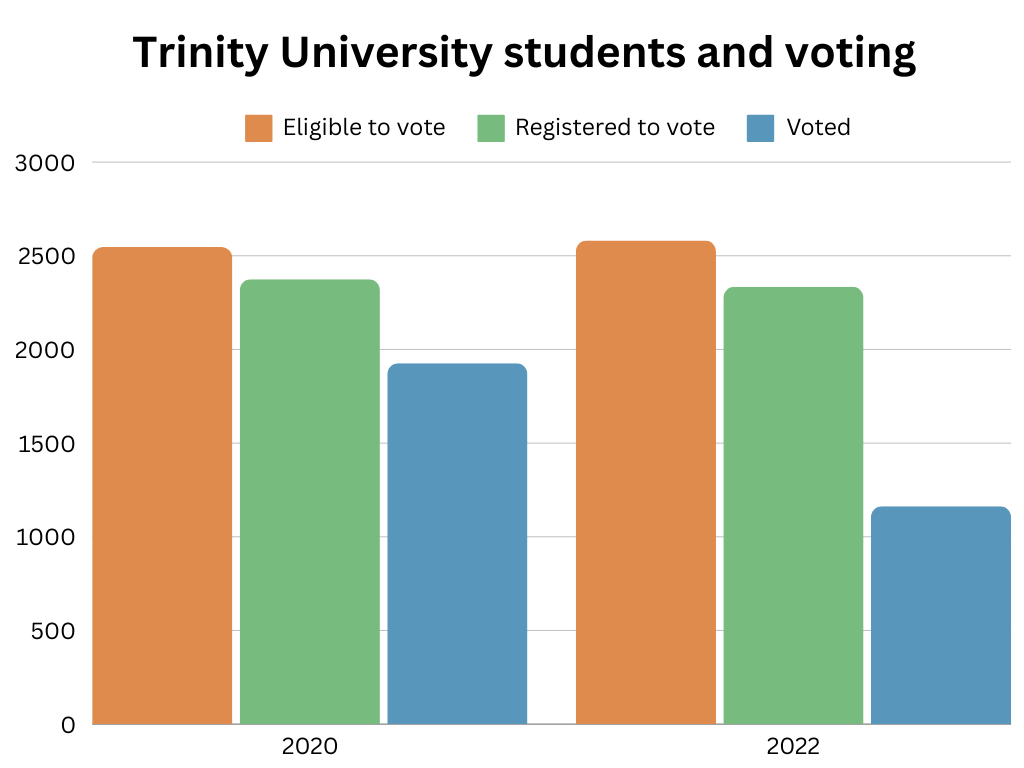illustration by Gracen Hoyle
Early summer seems a distant memory, clouded by anxieties produced by the arrival of COVID-19 to our community. Almost immediately, another diseased system demanded our attention following the death of George Floyd, and a global outcry to confront racism at every level in society — including at Trinity University. In the days following Mr. Floyd’s death at the hands of police, we heard clearly the voices of students, alumni, faculty and staff, each of whom cried “enough!” While we had embraced Intentional Inclusion as an aspirational value and were making progress in key areas, our efforts were not having a meaningful impact on the biased systems that impact members of our community. Our 150-year-old institution still has much work to do. We are seeking to listen to the voices in our community and to take action.
Social media accounts provide members of our community an unfiltered platform for sharing their experiences. Often the words and stories we read are positive and inspirational. Other times, they are shocking, galvanizing and difficult to read. The convulsive outpouring of wrongs and unacknowledged hurts is cathartic and certainly within every individual’s right to free speech. However, we also know that social media posts in general may be missing critical information. As we organize to build a new Trinity way, social media cannot be the primary means by which we work toward real, systemic change on our campus.
A problem as complex as systemic racism on our campus cannot be undone with a tweet, nor short-term, retributive actions. We must be committed to a factual inquiry and fair process. Investigations that result in findings of responsibility result in consequences and accountability. Even when an investigation does not result in a finding of discrimination, such inquiries present an opportunity to critically evaluate our systems and processes to seek ways to better serve our community. Finally, in the case of incidences of bias, we have an opportunity to seek reconciliation and growth. Following our processes also will help us see barriers we did not know existed and identify ways we can improve. Moving Trinity forward meaningfully will require us to bring the same standards of rigor and accountability that we apply in the classroom to our conversations about the root causes of the barriers members of our community experience at Trinity.
In June of this year, I turned to our faculty and staff and asked them to bring the same leadership and sense of urgency we were applying to the COVID crisis to our Intentional Inclusion crisis. Our student leaders in BSU, TDC and ASA, among others, had provided explicit demands and concerns that deserved attention. First to answer the call were Dee Jones, VP for Academic Affairs, and Wilson Terrell, Jr., Associate Professor for Engineering Sciences. They agreed to co-chair an action-oriented Task Force on Diversity and Inclusion. A wide-ranging group of faculty and staff, supported by on-and-off campus subject matter experts and advisors, gave up time from their summer break to commit to this work. The resulting report offers 29 recommendations that position us for systemic change at Trinity. Though the transformation of our campus to one that is more diverse, equitable and inclusive will not happen overnight, we now have a roadmap to move forward.
Some of the immediate initial steps that we are taking include:
- To follow the recommendations that are legally allowed and relevant to inform the search to select Trinity’s next Vice President for Academic Affairs.
- To conduct an external review of Student Life and, in addition, Academic Affairs. The holistic student experience depends on the full integration of these two administrative units and cannot be achieved in silos.
- To conduct an audit of Trinity’s administrative structure to examine the number of direct reports to the President, evaluate the portfolios of Vice Presidents and chief administrative officers, and benchmark the staffing of a Chief Diversity Office against peer institutions of similar size and operating budgets. This step creates the opportunity for establishing a Chief Diversity Officer reporting to the President.
I will continue to work with the Executive Leadership Team to shape the individual recommendations into cohesive initiatives with milestones, timelines and outcomes along with an initiative owner. The results of all projects will be publicly reported on the Intentional Inclusion website alongside the original task force recommendations. We must embrace the opportunities that are uniquely ours to address gaps and redress grievances. In this way, we will get to the root causes of those systems, processes and programming that hinder our ability to foster a true sense of belonging for BIPOC and other marginalized groups as we seek to ensure the diversity of individuals and thought needed to ensure our future.
Our next steps are critical to earning the confidence and engagement of those same students, alumni, faculty and staff who called us to shake off the status quo in favor of real, structural progress. I am aware of the limitations and biases I bring to this work, and I am prepared to compensate by listening to and involving the voices of those who do not look like me, and whose lived experiences I can appreciate but never replicate. This is how we achieve real and lasting change: each individual committed to their personal progress, standing on the shoulders of the next, until we form a more enlightened community and institution. Trinity is all of us, and it will take all of us to do better.






